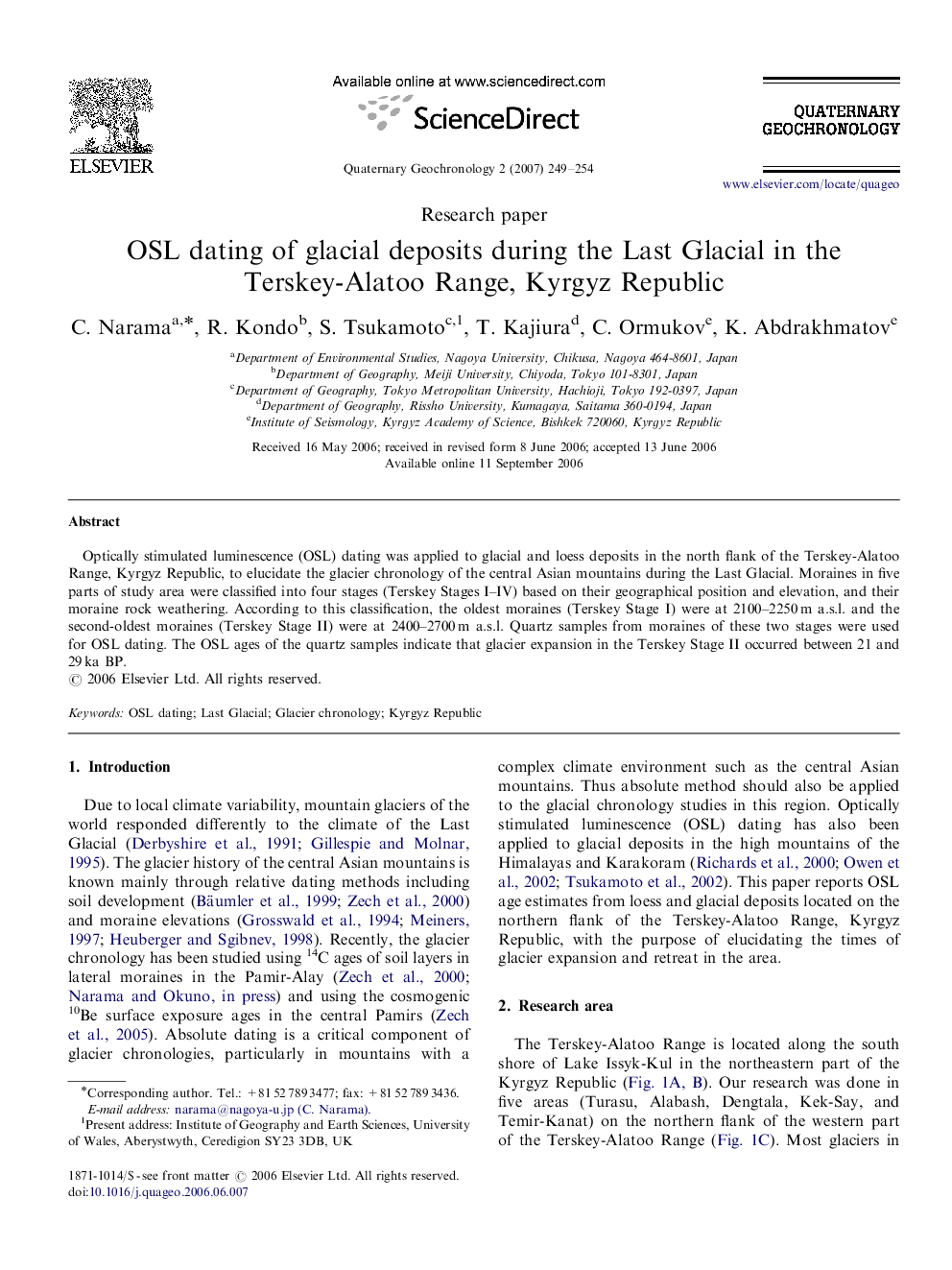| Article ID | Journal | Published Year | Pages | File Type |
|---|---|---|---|---|
| 4725411 | Quaternary Geochronology | 2007 | 6 Pages |
Abstract
Optically stimulated luminescence (OSL) dating was applied to glacial and loess deposits in the north flank of the Terskey-Alatoo Range, Kyrgyz Republic, to elucidate the glacier chronology of the central Asian mountains during the Last Glacial. Moraines in five parts of study area were classified into four stages (Terskey Stages I-IV) based on their geographical position and elevation, and their moraine rock weathering. According to this classification, the oldest moraines (Terskey Stage I) were at 2100-2250Â m a.s.l. and the second-oldest moraines (Terskey Stage II) were at 2400-2700Â m a.s.l. Quartz samples from moraines of these two stages were used for OSL dating. The OSL ages of the quartz samples indicate that glacier expansion in the Terskey Stage II occurred between 21 and 29Â ka BP.
Related Topics
Physical Sciences and Engineering
Earth and Planetary Sciences
Geochemistry and Petrology
Authors
C. Narama, R. Kondo, S. Tsukamoto, T. Kajiura, C. Ormukov, K. Abdrakhmatov,
